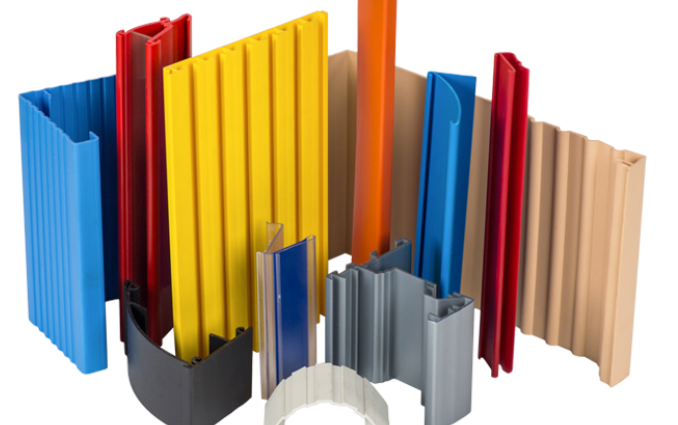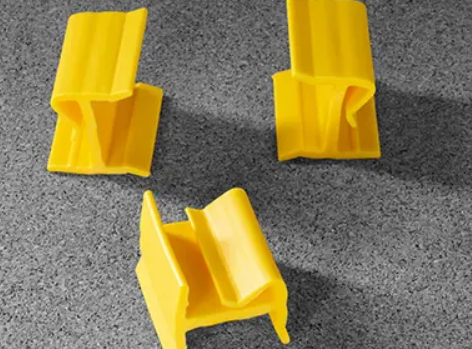Custom plastic extrusion is the process of shaping melted plastic into continuous profiles to meet specific design requirements.

Types of Custom Plastic Extrusion
Custom plastic extrusion is a versatile manufacturing process used to create a wide range of products with different profiles and shapes. This process involves melting raw plastic material and forming it into a continuous profile through a specialized die. The extruded plastic can then be cut to length and further processed or finished as needed.
Different Profiles and Shapes
- Tubing and Pipes: Used in various industries, these can range from small medical tubing to large industrial pipes. Custom specifications for diameter, wall thickness, and length cater to specific applications.
- Profiles and Sections: This includes complex shapes like window frames, railings, and trims. Custom profiles can be designed to meet precise dimensional tolerances.
- Films and Sheets: Extruded plastic sheets are used in packaging, automotive, and construction industries. They can be manufactured in different thicknesses and grades, depending on their use.
- Rods and Bars: Used in machining and manufacturing, these can be produced in a range of diameters and lengths. They are often selected for their strength and durability.
Materials Used in Custom Extrusion
- Polyethylene (PE): Polyethylene is widely used due to its versatility and cost-effectiveness. It’s ideal for products like pipes, films, and sheets.
- Polyvinyl Chloride (PVC): PVC is known for its durability and is commonly used for window frames, pipes, and medical tubing.
- Polystyrene (PS): Often used for its clarity and rigidity, polystyrene is ideal for creating packaging materials.
- Acrylonitrile Butadiene Styrene (ABS): ABS combines the strength and rigidity of polystyrene with the toughness of polybutadiene rubber, making it suitable for automotive and consumer goods.
The Custom Extrusion Process
Custom plastic extrusion is a complex process that transforms raw plastic materials into a continuous, profiled product. This process involves several stages, each crucial for ensuring the final product meets the desired specifications and quality standards.
Design and Prototyping
- Conceptualization: The process begins with a detailed understanding of the client’s requirements, including the product’s intended use, specifications, and performance criteria.
- Computer-Aided Design (CAD): Designers use CAD software to create a precise 3D model of the product. This stage is crucial for addressing any potential issues in the design, such as weak points or material stress areas.
- Prototyping: Once the design is finalized, a prototype gets created. This stage helps in verifying the design in real-world conditions, assessing its functionality, and making necessary adjustments before full-scale production.
Tooling and Die Design
- Die Fabrication: The die is a critical component in the extrusion process, shaping the molten plastic into the desired profile. Die design involves precise engineering to ensure it can withstand the pressures and temperatures of the extrusion process.
- Material Considerations: The choice of materials for the die depends on factors like the type of plastic being extruded, the complexity of the profile, and the required production volume. High-grade steel or aluminum are common choices for their durability and heat resistance.
- Cost Efficiency: The design of the tooling directly impacts the cost and efficiency of the extrusion process. Advanced tooling designs can reduce material waste, improve production speed, and extend the die’s lifespan, thereby optimizing overall production costs.
Applications of Custom Plastic Extrusion
Custom plastic extrusion is a pivotal manufacturing process, contributing significantly to various industries. Its ability to produce a wide range of shapes and forms from plastics makes it indispensable in many applications.
Industrial Applications
- Building and Construction: Extruded plastic components are essential in building construction, including piping, guttering, and window frames. These products stand out for their durability, weather resistance, and lower costs compared to traditional materials.
- Automotive Industry: The automotive sector extensively uses extruded plastics for parts like bumpers, trim, gaskets, and tubing. The use of lightweight plastic components helps in improving fuel efficiency and reducing overall vehicle weight.
- Electrical and Electronics: Extrusion plays a critical role in producing insulating covers for wires and cables, components for electrical devices, and housing for electronic gadgets. The precise dimensional control achievable with extrusion is crucial in these applications.
Consumer Products and Packaging
- Household Items: Many household products, such as garden hoses, shower curtains, and plastic bags, are manufactured using custom plastic extrusion. The process allows for a wide range of colors, textures, and material properties.
- Food and Beverage Packaging: Custom extrusion produces various packaging materials, including plastic bottles, trays, and wrapping films. The ability to use food-grade plastics that meet health and safety standards is a key advantage.
- Sports and Recreation: Extruded plastics are used in making sporting goods like fishing lines, ski equipment, and protective gear. Their strength, flexibility, and resistance to environmental factors make them ideal for these purposes.
Quality Control and Testing in Custom Extrusion
Quality control and testing are critical aspects of the custom extrusion process, ensuring that the products meet or exceed the required standards and specifications. This involves a series of checks and tests, both during and after the extrusion process.
Standards and Certifications
- ISO Standards: Many extrusion facilities adhere to ISO 9001 standards, which focus on quality management systems and continuous improvement.
- Industry-Specific Certifications: Depending on the application, other certifications like ISO 13485 for medical devices or automotive industry standards may apply.
- Environmental Compliance: Certifications like ISO 14001, which focuses on environmental management, ensure that the extrusion process minimizes its environmental impact.
Testing Methods and Quality Assurance
- Dimensional Accuracy: Using tools like calipers and micrometers, technicians measure the dimensions of the extruded products to ensure they meet the design specifications.
- Material Testing: This includes testing for material properties such as tensile strength, flexibility, and resistance to heat and chemicals.
- Performance Testing: Products undergo tests to ensure they perform as expected under various conditions, like stress tests and weathering tests.
- Visual Inspection: This involves checking the surface finish and color consistency of the products.

Challenges and Solutions in Custom Plastic Extrusion
Custom plastic extrusion, while versatile and efficient, faces several challenges. Addressing these effectively is key to maintaining quality and meeting the demands of diverse applications.
Common Issues in Plastic Extrusion
- Material Variability: Different plastic materials behave differently under extrusion conditions, which can lead to inconsistencies in the final product. For instance, variations in melt flow or thermal stability can affect product quality.
- Die Swell: This occurs when the extruded material expands upon exiting the die, potentially leading to dimensional inaccuracies.
- Surface Imperfections: Issues like rough surfaces or blisters can arise due to factors like improper temperature control or contamination.
- Cost Constraints: Balancing the cost of materials, energy consumption, and operational efficiency is a constant challenge. High-grade materials and energy-intensive processes can significantly impact the overall cost.
Innovative Solutions and Best Practices
- Advanced Material Testing: Conducting thorough material tests before production helps in understanding and predicting how different plastics will behave during extrusion.
- Precision Die Design: Utilizing computer-aided design and manufacturing (CAD/CAM) for die making ensures higher accuracy and reduces the issues of die swell and dimensional inaccuracy.
- Temperature Control Systems: Implementing sophisticated temperature control systems can mitigate surface imperfections and improve product quality.
- Sustainable Practices: Incorporating recycled materials and optimizing energy usage are crucial for reducing environmental impact and managing costs.
Advancements in Plastic Extrusion Technology
The field of plastic extrusion technology has seen significant advancements over recent years. These improvements not only enhance the efficiency and quality of the extrusion process but also address environmental concerns.
Innovations in Materials and Processes
- High-Performance Polymers: The development of new polymer blends and composites has expanded the range of properties available in extruded products, such as increased strength, flexibility, or heat resistance.
- 3D Printing and Extrusion: Integration of 3D printing technology with traditional extrusion processes has opened up new possibilities for complex shapes and custom designs.
- Smart Manufacturing Technologies: The incorporation of IoT (Internet of Things) and AI (Artificial Intelligence) in extrusion processes allows for real-time monitoring and automation, leading to higher precision and efficiency.
- Co-Extrusion Techniques: This process involves extruding multiple layers of different materials simultaneously, providing a way to combine various properties in a single product.
Sustainability in Plastic Extrusion
- Use of Recycled Materials: Incorporating recycled plastics into the extrusion process reduces waste and conserves resources, aligning with global sustainability goals.
- Biodegradable Plastics: The development and use of biodegradable and bio-based plastics are gaining traction as a way to reduce the environmental impact of plastic products.
- Energy Efficiency Improvements: Modern extrusion machines are more energy-efficient, using advanced heating and cooling systems to reduce energy consumption.
- Waste Reduction Strategies: Manufacturers are adopting practices to minimize waste during production, such as reusing scrap material and optimizing the extrusion process to reduce off-spec products.


